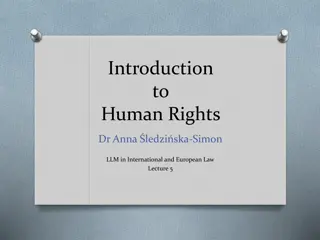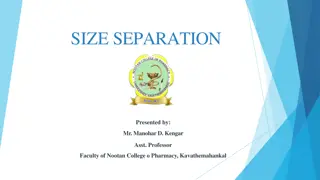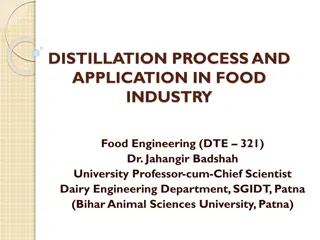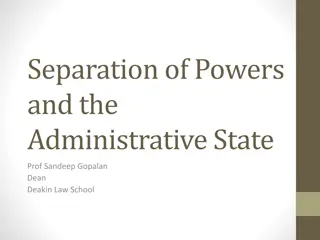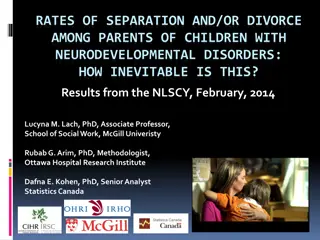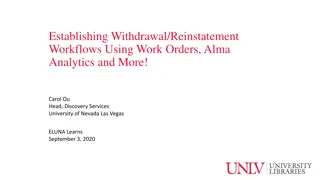Understanding Medical Separation with Reinstatement Rights (MSWR)
Explore the key elements involved in placing a student on Medical Separation with Reinstatement Rights (MSWR), including consultation with Wellness staff and recent policy changes. Delve into scenarios where MSWR might be needed and understand the process of Medical Separations in Job Corps. Gain insights into when a medical separation may be considered and the necessary considerations involved in such decisions.
Download Presentation

Please find below an Image/Link to download the presentation.
The content on the website is provided AS IS for your information and personal use only. It may not be sold, licensed, or shared on other websites without obtaining consent from the author. Download presentation by click this link. If you encounter any issues during the download, it is possible that the publisher has removed the file from their server.
E N D
Presentation Transcript
MSWR and TEAP Diane A. Tennies, PhD, LADC April 2023
Learning Objectives Participants will: 1.) Understand the elements that are required for a student to be placed on a Medical Separation with Reinstatements Rights (MSWR). 2.) Identify the process associated with consultation with other Wellness staff which is a required element of MSWR process. 3.) Articulate recent policy changes regarding assessment, consent, referrals and transportation.
Scenarios Where MSWR is Possibly Needed Upon entry with a student who is experiencing substance withdrawal. During the intervention period when a student s addiction (and related behaviors) are interfering with functioning, and they report being unable to remain abstinent. After the intervention period, the student experiences a significant and extended relapse (possibly during a break away from center). Student receives an ETOH related SIR and assessment evidences a SUD.
Other Possible Scenarios What have you encountered?
Job Corps PHR Change Notice Number 22- 02
When Do Medical Separations Occur? The HWD will refer the student to the TEAP if there is a reasonable belief, based on objective evidence, that the student has a substance use condition that presents a significant barrier to continued participation. TEAP is the subject matter expert and must be involved in the MSWR (and this involvement documented). A medical separation occurs when a student is no longer able to participate in Job Corps because of this condition. Medical separations must not be used in lieu of providing reasonable accommodation, reasonable modification in policies, practices, or procedures, and auxiliary aids and services (RA/RM/AAS) to include equally effective communications for individuals with disabilities. RA/RM/AAS must be tried or considered with the goal of allowing the student to participate in the Job Corps program to the maximum extent possible.
A medical separation may be considered when the appropriate qualified health professional (TEAP) has determined the student has a preexisting or acquired health condition that requires treatment beyond the basic health services provided by Job Corps; AND The necessary treatment is unavailable or will be unusually costly to Job Corps; AND Administrative Leave with Pay, Personal Leave with Pay, other types of leave, and other methods of addressing relevant medical concerns without resorting to separation have been tried or considered in each individual case and determined to be insufficient. Medical Separation Considerations
5. Medical Separations with Reinstatement Rights (MSWR) for substance use conditions: (a) Students may be given a MSWR for a diagnosed substance use condition, allowing the student to return to Job Corps to complete his or her training within 180 days. To return to Job Corps, proof of treatment completion from a qualified provider must be received. (b) A MSWR for substance use conditions can only be given if the following conditions are met: (1) The TEAP specialist and Center Director agree that the student has a diagnosed substance use condition. (2) There is a documented assessment of the student s diagnosed substance use condition by the TEAP specialist in collaboration with the center mental health consultant. PRH 2.3 R5 MSWRs (c) A MSWR cannot be granted in lieu of ZT separation when a positive follow-up test is reported during the intervention period. [This means up to the point the second drug test is collected.] (d) If a student is placed on a MSWR during the intervention period, the intervention period is suspended and resumes the day the student is scheduled to return to the center.
PRH 2.3 R5: c. [Entrance] Assessment for identification of students at risk for substance use problems to include: 1.) Review of Social Intake Form (SIF) or intake assessment of all students performed by counseling staff within one week of arrival. 2.) Formalized assessment measures (e.g., SASSI3 or SASSIA2), and clinical judgment to determine students level of risk for substance use. 3.) Collaboration with the Center Mental-Health Consultant to determine when a MSWR or medical separation is appropriate and should be recommended for a student with substance use conditions (see Chapter 2, Section 2.3, R5, e.5)
Collect available data Clinical interview student with assessment to determine if has a SUD and is unable to participate at JC Overview of MSWR Process Document assessment with recommendations Complete Student Health Plan Form Follow your chain of authority/command and then discuss with Center Director
PRH 2, R5 is silent about the specifics of the assessment process. Data available to rely upon: SHR (653 and Health History Form, especially alert questions) SIF (score the CRAFFT and document results) Results of formalized assessment measures administered to those with 2 or more on CRAFFT (questions 4-9) Initial UDS results Feedback from other staff (counselor/trade instructor/reaction/residential) Clinical Interview of Student Steps when Students Need Assessment (Center must have an assessment process for students that allows confidence that students who need additional support to be successful at Job Corps are identified and services provided (based on results of the assessment)).
The Center Director must approve all medical separations. Four Critical Elements of The TEAP Specialist should document the following information with the Center Director s formal medical separation notification: Diagnosis A narrative statement of the student's condition according to the most recent DSM diagnostic categories, including all relevant clinical information. A SPAMIS code must also be provided based on the International Classification of Diseases Edition 10. Functional Statement A clinical statement that includes a summary of clinical evidence and information about the student's functional ability and how they are not able to benefit from the training program at this time. Escort A specific statement regarding the need for an escort to ensure that the student arrives safely at his/her destination. Referral The substance abuse agency or services identified, and the actual referral arrangements made to assist the student. Before leaving the center, the student should sign a release of information form so that the TEAP Specialist can provide the agency with a referral summary and receive treatment information. the Assessment Conclusions (From the TEAP Desk Reference Guide)
Assessment Process and Documentation Clinical interview components could include: Conclusions Address: Review of process and reason for interview Why there is a concern about the student Relevant psychosocial history Prior substance use history/treatment/frequency of use Prior mental health history (to determine if possible co-occurring disorders) Current functioning Strengths/resources to remain on center with support Meets criteria for SUD, including current symptoms/behaviors and functional impairments Applicable SPAMIS Code (DSM-5/ICD 10) Specific and individualized treatment needs and requirements to return Individualized referral(s) Transport requirements Student consent
DSM-5 Criteria for Substance Use Disorder Taking the substance in larger amounts or for longer periods than was intended. There is a persistent desire or unsuccessful efforts to cut down or control use. A great deal of time is spent in activities necessary to obtain the substance, use substances, or recover from its effects. Craving, or strong desire to use substance. Recurrent substance use resulting in a failure to fulfill major role obligations at work, school or home. Continued substance use despite having persistent or recurrent social or interpersonal problems caused or exacerbated by the effects of substance. Important social, occupational or recreational activities are given up or reduced because of substance use. Recurrent substance use in situations in which it is physically hazardous. Substance use is continued despite knowledge of having a persistent or recurrent physical or psychological problem that is likely to have been caused or exacerbated by the substance. Tolerance, either markedly increased amounts of substance to achieve intoxication or desired effect or diminished effect with continued use of the same amount of substance. Withdrawal (symptoms or taking another substance is taken to relieve/avoid withdrawal symptoms.
Severity of the Substance Use Disorders Severity depends on how problematic the substance use disorder is (e.g., how many symptoms are identified) Two or three symptoms indicate a mild substance use disorder Four or five symptoms indicate a moderate substance use disorder Six or more symptoms indicate a severe substance use disorder. Qualifiers: in early remission, in sustained remission, on maintenance therapy, and in a controlled environment. This information assists in determining treatment requirements.
SPAMIS CODES: Substance-Related Disorders F10.10 Alcohol use disorder (includes all issues related to ETOH) F11.10 Opioid use disorder (includes all issues related to opioids) F12.10 Cannabis use disorder and all related issues F13.10 Sedative, hypnotic, anxiolytic, or related use disorder F14.10 Cocaine use disorder and all related issues F15.10 Stimulant use disorder and all related issues F15.90 Caffeine use disorder and all related issues F16.10 Hallucinogen use disorder and all related issues F17.200 Nicotine use disorder (includes all related issues) F18.10 Inhalant use disorder and all related issues F19.10 Other unknown substance use disorder F19.99 Other specified drug induced mental disorders Located at: https://supportservices.jobcorps.gov/health/Documents/JCDCNotices/SPAMIS_MedicalSeparation_Codes.docx
Example of Documenting Substance Use Assessment 04/07/2023 Student was assessed as to whether she was able to participate in JC at this time because of a substance use disorder. Student scored a 4 on the CRAFFT on entry which is above the clinical cut-off and suggests she may be at high risk for not completing JC. She was then administered other formalized assessment measures (DAST and CUDIT-R). She obtained scores above the clinical cut-off on both these measures. In interviewing the student, she reported that despite that she has been unable to ceasing using cannabis even though she wants to remain at JC and knows this is against policy. She described cravings and urges to use that are interfering with her concentration and is struggling to complete her work in the CPP. She is having difficulty sleeping and has limited appetite. Prior to arrival at JC, she was using cannabis several times a day and had driven repeatedly while impaired. Student meets criteria for a cannabis use disorder (F12.10 SPAMIS), moderate severity and requiring intensive outpatient programming to learn coping and relapse prevention skills before she will benefit from JC training. Diane A. Tennies, PhD, LADC TEAP Specialist
Next Step Completing Student Health Plan
During and After MSWR Monthly contacts with Wellness for updates and progress reports. Must have documented evidence of completion of the individualized treatment goals established when placed on MSWR. Once the student returns, meet with them to develop relapse prevention plan. Restart the intervention count (if applicable)
Center staff must submit a request to the Regional Office to extend a MSWR beyond 180 days for extenuating circumstances. What if they need more The request should be accompanied by supporting documentation from the student s health-care provider verifying that extension of leave is medically necessary. time? Requests will be reviewed on a case-by-case basis.
https://supportservices.jobcorps.gov/health/Pages/Documents.aspx Documents JC HW Website (Under administrative forms) https://supportservices.jobcorps.gov/health/Pages/NeedsAssessme ntDirectThreat.aspx
Assessment Resources TIP 31: Screening and Assessing Adolescents for Substance Use Disorders NIDA Screening Tools for Adolescent Substance Use Screening and Assessment Tools Chart Youth.gov Screening and Assessment






